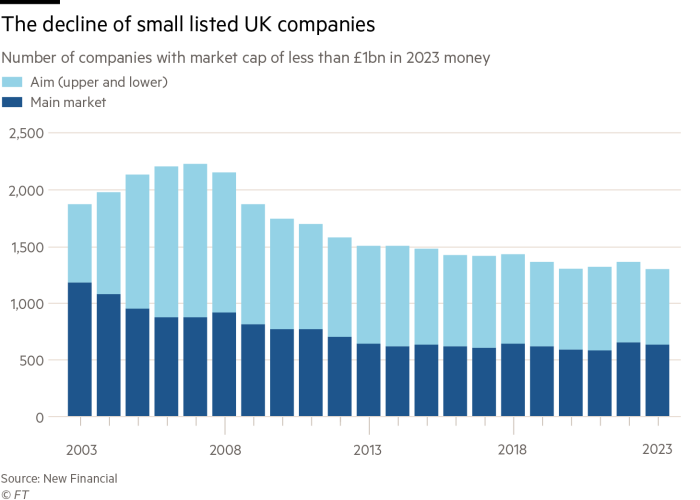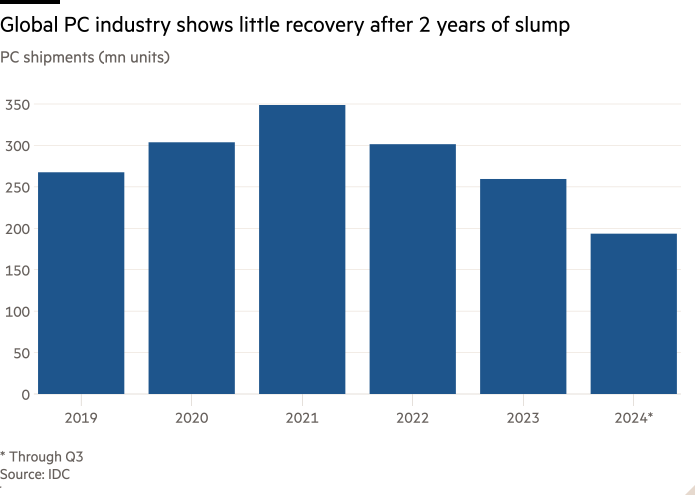This is an audio transcript of the Rachman Review podcast episode: ‘Afghanistan — a country on the edge’
[MUSIC PLAYING]
Gideon Rachman
Hello and welcome to the Rachman Review. I’m Gideon Rachman, chief foreign affairs commentator of the Financial Times. This week’s podcast is about Afghanistan. My guests are Saad Mohseni, chairman of Afghanistan’s largest television station and co-author of a new book, Radio Free Afghanistan. And Fatima Gailani, a board member of the Afghan Red Crescent and women’s rights activist.
The future for women in Afghanistan looks extremely bleak and hunger is widespread in the country. So is it time for the outside world to change its approach to Afghanistan?
News clip
Desperate to flee Taliban rule, Afghans are resorting to this: grasping at US military aircraft and risking their lives. Some hung on to the wheels and fell to their death.
Gideon Rachman
In August 2021, Kabul — the capital of Afghanistan — fell to the Taliban. In the aftermath of the chaotic and humiliating withdrawal of American, British and other foreign troops, many in the west wanted to forget the country. But for those who still pay attention, the news out of Afghanistan is bleak and worrying. The Taliban have severely restricted the rights of women to work and girls to be educated. And the country suffers from a severe shortage of food and shelter. So I began the conversation by asking Saad to give a brief summary of the major developments in Afghanistan since the Taliban regained power.
Saad Mohseni
Well, Afghanistan is an estranged place. For us Afghans, we expected things to be a lot worse. The economy has stabilised. Inflation seems to be under control. The currency has been one of the strongest in the region. And the Taliban have managed to, you know, raise revenues through taxes. The amnesty declared early on has ensured that thousands of Afghans have not lost their lives. But at the same time, the humanitarian situation is pretty dire. Half the country doesn’t have food security. A third of the country doesn’t have access to shelter that would protect them in these coming winter months. We have something like 65 or 70 per cent of the population that doesn’t have access to clean water.
The country is on the edge and basically, in terms of humanitarian crises that Afghanistan has faced, nothing has changed. If anything, the situation’s worse. At the same time, we have hundreds of thousands of Afghans being pushed out of Iran and Pakistan, forced to return to the country, and the country is not prepared to look after them. So three years on, where do we stand? The sanctions imposed in Afghanistan have not changed the Taliban. The Taliban are here to stay. So I’ve been advocating for at least a reassessment in terms of the way the world deals with Afghanistan.
Gideon Rachman
Well, we’ll come to that in a moment. But Fatima, some of the few headlines that have come out of Afghanistan that have made it to the west have been about women’s rights. And it looks like the Taliban have been becoming progressively harsher on that front. What have the Taliban actually done against women? I mean, if you could outline the steps they’ve taken.
Fatima Gailani
The first six months, even one year, it was quite optimistic that things for women could continue. Probably some changes in appearance, but not a drastic change. But now it is outrageous that the only country in the world and the only country in the Muslim world that a girl after the secondary cannot go to school, cannot go to university.
Gideon Rachman
So, they get chucked out of school, what, at 11?
Fatima Gailani
The schools are closed for secondary and high school. It’s just closed. At the beginning, private schools were still open, but now even private schools were restricted. And there’s a state of confusion also because after a dramatic earthquake in Herat, which was very tragic, they found out that they need women social workers, they need women nurses, they need women aid workers and especially doctors. So now it is possible for girls to study medicine, nursing or midwife and all that. But where? And if you don’t finish school, then how could you jump all of a sudden to university? For women, it’s not just a very difficult time. It is also confusing time.
Gideon Rachman
What about women in the workforce? People who are already working, you know, before the Taliban took over — what’s happened to them?
Fatima Gailani
Some of them are staying at home, especially teachers. But if you go to the police force, they need them. They have to work. Doctors do work, nurses work. If you go to an airline, you will see women issuing tickets for you. And if you land in the Kabul airport, you see women officers. That’s why it is a state of confusion, because they should understand that these decrees is not practical. They cannot continue like that. And above all, it’s not Islamic. It is not right. From every angle you see, this is wrong.
Gideon Rachman
Yeah. And I mean, you make the point that it’s not Islamic. And I mean, your father was part of the Islamic resistance against the Soviet invasion of Afghanistan, but also, I think, quite a firm advocate of women’s rights.
Fatima Gailani
Yes, I grew up in an Islamic family. My father was one of the most important religious leaders. But we grew up with this in our head that what is practical, what is fair, what is right. And I was about to start my PhD here in Cambridge but my father told me — it was at the beginning of war against Soviet Union — that I have something much important for you. And he actually asked me to stop my education and be in politics of the mujahideen. And at that time, I was not sure that it was the good thing. Now, I think this was the absolute right thing to do because you cannot talk about women’s rights and human’s rights if you don’t practice it yourself.
Gideon Rachman
But Saad, I mean, you run television stations in Afghanistan. And as I understand it, you still have women reporters.
Saad Mohseni
Yes. As a matter of fact, we have increased the number of women working for us. Our news team used to employ eight women, now we have 20 women. And something like 25 per cent plus of all our employees are women. We’re very actively trying to hire and train women, and they’re very keen to work. I mean, it’s important for them to be able to earn an income, especially in these difficult times. What’s interesting is that the Taliban 2.0 in terms of decreeing directives is not dissimilar to Taliban 1.0. But in terms of implementation, there’s a huge difference. For example, NGOs have been banned from hiring women. But, you know, our friends at the NRC and other organisations, including the UN, will tell you that they continue to hire women.
And that’s because at the local level, they’re able to negotiate with local Taliban leaders to secure their rights to work. So, you know, the movement itself is not a monolithic movement, and individuals have different approaches or different interpretations of Islam. So as a result, the situation on the ground is a lot more nuanced than what meets the eye, especially if you’re looking at it from the outside. So we’re advocating for engagement because I think some of these more pragmatic, practical Taliban need to understand what the world expects of them and vice versa. I think there is a path. The problem is the humiliation of August of 2021. I joke that if the American administration could expunge the word Afghanistan from the dictionary, they would because it was such a traumatic experience for them. I mean, I met with so many of them after August and they just could not face Afghanistan. So the hope is that the new administration, whether Kamala Harris or Trump, that they reassess their Afghan policy.
Gideon Rachman
We’ll come back to the diplomacy and the international engagement in a bit. But I’m just intrigued by the practicalities of running your television station. So you’ve expanded the number of women staff, but can they appear on air? Can they work alongside men? How do you do that?
Saad Mohseni
All of the above. I mean, they’re very courageous — the women who work for us. They’re in front of the camera. They’re behind the camera.
Gideon Rachman
Has their dress changed?
Saad Mohseni
Well, the only thing that they have to do is cover their faces. And they do it by wearing a surgical mask. Technically then their face are covered. But they go out and they go to ministries. They’re on the field and they report from different parts of the country. I mean, some parts of the country, the local authorities are a lot more restrictive. But, you know, they push, they push the boundaries on a daily basis. So we now have a lot of education programs. We have female teachers. We have female students in the classrooms. We tend to . . .
Fatima Gailani
And very successful, too.
Saad Mohseni
Well, the education programs are exceptional.
Gideon Rachman
And is that partly to fill the void left by them closing the secondary schools?
Saad Mohseni
Yeah. They can go up to sixth grade. And from then on we’ve introduced four subjects — maths, chemistry, physics and biology. You know, the idea was it would just keep things going. But actually we’re noticing that it’s having an impact in terms of girls and boys learning more. Of course, nothing replaces real schools, but nonetheless, it’s a sort of a band-aid solution for now.
Gideon Rachman
And what about entertainment? Because you used to have, you know, recognisable in the west, popular entertainment shows, Afghan Star, etc, that kind of thing. Can you do any of that any more?
Saad Mohseni
No music, no soap operas. But we do a lot of other things — chat shows, game shows, sporting events, cooking shows and so forth. But Afghans have access to the internet now and Afghans have access to satellite networks, so they’re able to consume everything. And the key thing is that Afghanistan changed in the 20 years of occupation. Afghans changed. It’s the youngest country outside of sub-Saharan Africa. Median age is 18, 18.5, population of 42mn people. Something like 80 per cent of the population is under the age of 30. Most of these kids were not around when the Taliban last ruled over the country. The other reason for the world to continue engaging or to perhaps re-engage is that we have to sustain some of the gains of the last 20 years.
Gideon Rachman
Yeah, I mean, Fatima, you obviously go back to Afghanistan. What’s your sense about how much the Taliban — beyond the issue of women’s rights, although that’s central to everything — have been able to sort of take the country back and erase the last 20 years?
Fatima Gailani
No one can take this country back. This country never had so many educated women and so many educated young people in the history of Afghanistan. I was born and brought up in the time of the peace in Afghanistan. This is the Afghanistan I want for the youngsters. That they were aware of their tradition, aware of their religion, but still they have the liberty to live like any young person. Today in Afghanistan, you cannot cage these vibrant women. They want to be part of Afghanistan. Twelve years in a country with conflicts, I was in the Red Crescent and I saw that without women, we cannot carry on our programs in the remotest villages. We need women to be part of every work, if it is in media or if it is in medical field, every field you need them.
Gideon Rachman
Is that, do you think, widely accepted, though, because presumably when the Taliban come in and try to restrict women’s rights, there must be a large part of the country that agrees with that?
Fatima Gailani
Well, it is not a question of agreement. One has to be realistic. I give you the example of Moraa university. This Moraa university was created at the time of Karzai, and it was opened when President Rouhani was there. And this university is located in the land of the Red Crescent. So they pay the Red Crescent rent. Why it was created? Because so many young girls were not allowed to go to be educated in the mixed university. And the doctor who started this university, his mother died because his father wouldn’t allow the mother to be treated by a male doctor. So this university, even the gardener and the plumber are women. And this was the most popular university before Taliban. They had a huge waiting list. This university has permission to work, but because people can’t afford it, it’s almost empty.
Gideon Rachman
And people can’t afford it brings us to the economic background. I mean, you painted this mixed picture, the kind of macroeconomic stats that might make a central banker say, oh, this is going OK. But the reality is that people are living incredibly close to the edge.
Saad Mohseni
Well, the international community continues to litigate against the Taliban at the expense of the Afghan population. Our central bank reserves have been frozen because of the sanctions, although technically companies could actually go and operate. But a lot of people are reluctant because logistically it’s hard to transfer money into the country and transfer money out. You know, I’ve met with US Treasury officials and they say, well, there are no sanctions per se for institutions to go invest in the country, but in reality, it’s much more difficult than that.
So we have major challenges. Now the Taliban also have to move on things like inclusivity and women’s rights and so forth. But I think there is a path. It’s a narrow one, and it’s important for this country. You know our population growth is 3 per cent per annum. We’ll be at 100mn by 2060, 2070, and still a very young population. How do we ensure that hundreds of thousands of people don’t starve to death?
But the problem also is that for you, Europeans, the fallout will be felt here in Europe. Afghanistan is two countries away from Europe. You’ve got Iran, Turkey and Europe. So hundreds of thousands of Afghans who may be forced to flee Afghanistan, end up in Europe. Drug production, terrorism. What happens in Afghanistan rarely stays in the country.
Gideon Rachman
Well, you’ve been one of the country’s most successful entrepreneurs. What would a successful Afghan economy look like? I mean, given the war, devastation, the problems with education, etc, what’s the path to more prosperity?
Saad Mohseni
There are lots of successful Afghan entrepreneurs, a lot more successful than me and they benefited mostly from the vibrant economy that partially helped with international engagement in the country — foreign troops and so forth. But Afghanistan has huge reserves in terms of minerals. We are a transit country where we can connect central Asia to the Arabian Sea. Its own growing population, it’s sufficient for investment in the country, 40mn people — it’s not a small country. And every sector you look at, there is potential for that economy to grow. We just need the environment to be able to attract these types of investments.
Fatima Gailani
Even quick investments like agriculture. I mean, there are very few countries in the world which could have the best fruit and vegetables that we can have. It could easily be the fruit and food basket of the Gulf. And in one year, you can see the result. Food security is no joke any more. And Afghanistan could do that. It is very important for people to understand that, yes, if there is aid for Afghanistan, investment in Afghanistan, Taliban will benefit from it. It is no doubt. But if you look at it from the other side, that if there is restriction on Taliban, how many millions of people will go into starvation and have horrible life? I saw it with my own eyes that the middle class is in a huge financial trouble.
Saad Mohseni
You know, I joke that over the last three years, I have not seen one Talib lose weight. They’re all putting on pounds and they’re looking pretty healthy. So sanctions certainly is not gonna impact the Taliban.
Gideon Rachman
I mean, Fatima, I remember when I went there during the period when the Americans, the British were all there, a lot of their effort and Nato’s effort was to eradicate the drugs trade. That seems to be like a central thing. Is that still a problem for the Afghan side or the Afghan economy and is it still flourishing?
Fatima Gailani
Well, they had restriction on it and they were quite successful. But if there isn’t any alternative for the agriculture side, for a person who has this amount of land, what could they do? I mean, I have seen that instead of poppy, agriculture of rose and rose oil, which is much more expensive than heroin, they would do much better than poppies. But who will do it and how?
Gideon Rachman
And in a sense, I suppose if legal forms of trade are very hard, illegal trade becomes that much more attractive.
Saad Mohseni
I mean, one of the things which is important for people to know is that there is still aid in terms of humanitarian assistance. The problem is it’s like you’re facing the same set of challenges every 12 months. And it’s important for the world to engage also in terms of development, basic needs, you know, to work with the private sector, to work with the farmers. So then that would make the economy much more resilient. But because of the sanctions, the World Bank and the likes have challenges.
Gideon Rachman
But there were warnings that there was actual famine threat in Afghanistan. Is that still the case?
Fatima Gailani
In some areas it still is.
Saad Mohseni
In some areas? Yeah. I mean, I think that challenge has not gone away. The BBC did this documentary. In Jalalabad, they had 18 babies to a bed. Malnutrition impacts 3.5mn kids in the country. That’s 10 per cent of the population.
Gideon Rachman
I guess one of the countries that one might have thought that the Taliban would get on with might have been Pakistan. You know, who had helped them, maybe slightly unofficially, but throughout the war. But Pakistan-Afghan relations are terrible. What’s going on there, Saad?
Saad Mohseni
Well, I think the Pakistani state, in particular its military, probably had a sense of entitlement post-August of 2021, expecting the Taliban to roll over and become a kind state. That was not the case. And furthermore, the Taliban actually helped negotiate a peace deal with the TTP, which is the Pakistani Taliban. And somehow the Pakistani government reneged on that deal. As a result, the relations have soured. The TTP continues to become stronger in the country. So Pakistan is facing a whole series of challenges, including the TTP in the sort of north-west parts of the country, the Balochi separatist movement in Balochistan and even Isis.
Gideon Rachman
So ironically, the Pakistanis are now accusing Afghanistan of sponsoring terrorism . . .
Saad Mohseni
And providing sanctuaries to the TTP. Exactly the same, you know, accusation that we levelled at the Pakistanis.
Gideon Rachman
So Fatima, before the final sort of climax and the Taliban coming into Kabul in 2021, there have been attempted peace negotiations between the Afghan government and the Taliban with some involvement by the Americans in Doha in Qatar. You were involved as part of the negotiations. Can you just explain what was going on and what your role was?
Fatima Gailani
Well, our role — women’s role, we were four of us — we didn’t only concentrate on women’s issue. For example, I was in rule of law because I studied Islamic jurisprudence. So when we were talking about the future of Afghanistan under Islamic law, we were involved also. My other colleague, a woman, was involved in the future of civil society and what will be the human rights position. So we were engaged in everything, not just women’s issue. And the same way men were also engaged in women’s affairs and the future of women.
Gideon Rachman
And when you have had your dealings with the Taliban, their image obviously here in the west is of these crazy fundamentalists, completely unsophisticated. Were there people you dealt with where you thought, OK, well, this guy or this faction of people you can make progress with?
Fatima Gailani
It was not easy, but it took only weeks that they look into the four women negotiators as only negotiators. I mean, gender didn’t matter at all. With great respect to all of us.
Gideon Rachman
And you were four out of 20. Is that right?
Fatima Gailani
21, yeah.
Gideon Rachman
And looking back, do you think those negotiations were a waste of time or could they have succeeded?
Fatima Gailani
It could have succeeded. The thing was that before the announcement of unconditional withdrawal, the Republic’s side were dragging their feet. They were not very interested in this talk. As soon as the unconditional withdrawal announcement came . . .
Gideon Rachman
From Washington.
Fatima Gailani
From Washington. Then it flipped. The Republic side wanted to reach an agreement and have a political settlement. But the Taliban thought that, why should we? And every day we woke up, one area was falling in their hand. But the reality was that a successful political agreement would have been good for both sides, even for the Taliban’s side.
Gideon Rachman
How do you think they’ll be thinking about their international position and are they making any progress? I saw that they’ve just opened up in the UAE, an embassy.
Fatima Gailani
I think even for Taliban, when they were looking into the future, they would look with great enthusiasm and optimism that we will be the government and eventually we will be recognised and everything goes into normal. This is not the case, but I have always been very much pro-engagement. It may not be very popular. What did I say? That engagement without presence in Afghanistan, in Kabul, it will be an engagement only with the government. But if you have presence, like Japan, like Turkey, if you have meetings with the Taliban once a week, every day you have meetings with the rest of Afghanistan, with women’s group, the human rights’ group, with doctors’ association, with nurses’ association, so you will have a real engagement with the people of Afghanistan. That’s why I am a strong believer that the problem of Afghanistan cannot be solved without engagement, and real engagement comes with presence.
Gideon Rachman
So, Saad, I mean, you said that the Americans you knew, still know, the last thing they wanted to talk about after the sort of terrible scenes in Kabul was Afghanistan. And they’ve now got a whole host of other problems to worry about. Do you think there is any prospect of effective western re-engagement with Afghanistan?
Saad Mohseni
Well, I’m hoping there is. You know, Afghanistan really is a changed country. But what’s interesting also is that three years on, the new Afghanistan is also managing to change the Taliban. As Fatima mentioned, you know, they can now deal with women. They have meetings with female diplomats. They’re taking their families to restaurants. They’re becoming more sophisticated even in terms of dealing with the city dwellers. There’s a certain sophistication. So this new Afghanistan — and this is what I’ve written in my book in terms of the characters that helped us create this media group — this is what gives me hope. And this is what I’ve been telling people in Washington, both sides, the Trump side, as well as the Harris side, that you cannot ignore Afghanistan.
People who’ve been occupants of this White House who did forget Afghanistan eventually had to re-engage because Afghanistan can be the source of so many problems for the region. I am slightly optimistic. I think that we will have that opportunity. But given what the White House is facing today, it may not be a priority. And I think that’s why it’s important for us Afghans, Fatima and myself and so many other Afghans to continue to insist that they do so. America was engaged for a long time and a lot of Americans were involved in Afghanistan. It’s not something that’s gonna go away too soon.
Gideon Rachman
What about, finally, the argument that, well, maybe it’s not America or the west that will bring Afghanistan back into the international community. It’s kind of generally accepted that western influence is either slowly or quickly declining in the world. And, you know, they’re in Asia, which has many sort of booming economies. Could it be — I mean, Fatima, you mentioned Japan still has an embassy there — east Asians or south Asians or Chinese or the Russians who actually play the key role in getting Afghanistan reintegrated into the world economy?
Saad Mohseni
The problem is that because they’re continuing to litigate against the Taliban, no one else can actually go and engage. You know, no business would like to look at investing in Afghanistan. The country’s reserves are frozen, so they can’t print money. They can’t fulfil their functions as a central bank, for example. It just makes it very, very difficult for people to do business.
Gideon Rachman
And the litigation is based on what?
Saad Mohseni
Well, you know, most of these sanctions have been grandfathered then. They’re not new sanctions. Those sanctions from the ’90s and the early 2000s against individuals and the Taliban as a movement. So these sanctions need to get lifted. I mean, there’s pseudo-recognition from about three or four countries where they’ve accepted ambassadors. But really, these UN sanctions make it very, very difficult for anyone to do business in the country. But I think regional integration is important. But US leadership, we’ve discovered three years on, US leadership is key.
Fatima Gailani
America is the key. I saw it for the last 46 years that whatever is decided for Afghanistan, whether the Europeans agree or disagree, eventually they will follow the American policy. My hope is that, if not for the sake of Afghan people, for the sake of the Europeans and for the Americans themselves to have a safer life, to have another look in Afghanistan and find a way that Afghanistan, its people could be looked after, engagement could stay. And I am a great believer that with conversation, with engagement, we will find a way.
Gideon Rachman
That was Fatima Gailani ending this edition of the Rachman Review. You also heard from Saad Mohseni. Thanks for listening. And please join me again next week.














































































































































You must be logged in to post a comment Login